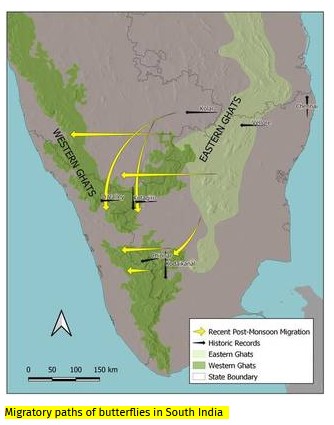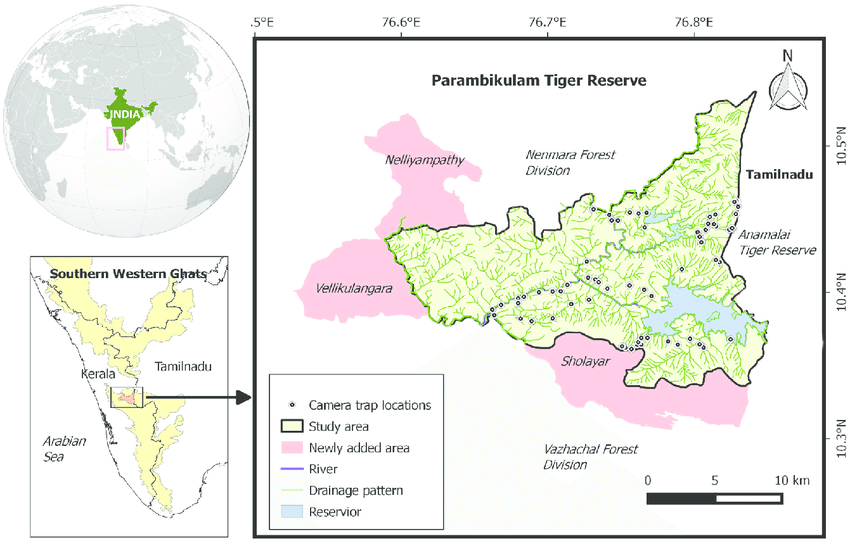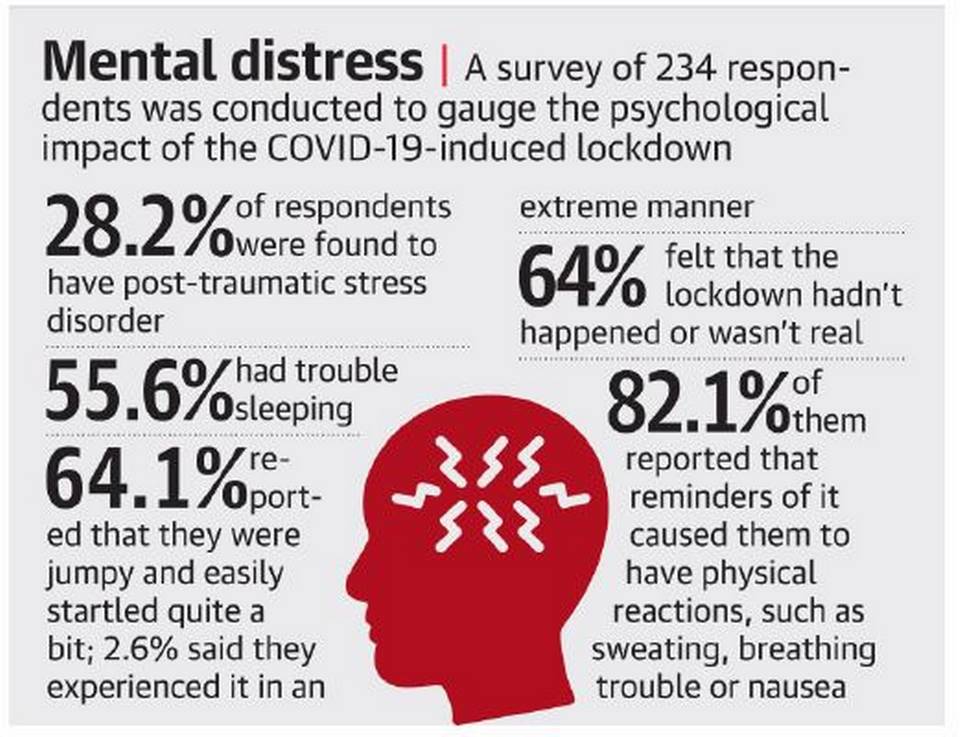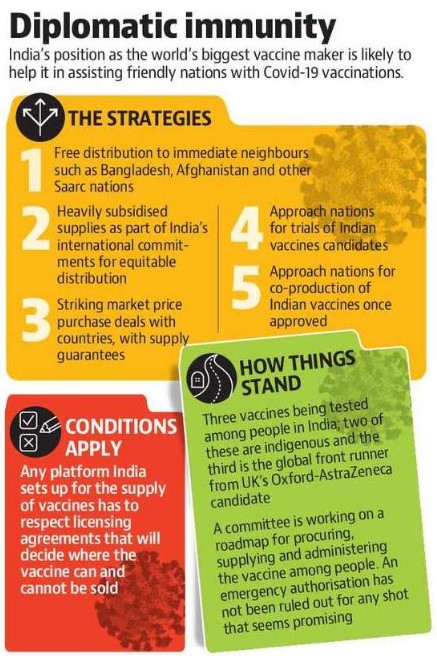Contents
- GST Due: Centre asks States to borrow
- India decides to pull out of Kavkaz 2020
- China calls for ‘Impregnable Wall’ for Tibet
- Migration of Butterflies in South India
- Kandhamal Turmeric with GI Tag not selling
- Covid lockdown, Mental Health and House Panel
- India’s Covid-19 vaccine diplomacy
GST DUE: CENTRE ASKS STATES TO BORROW
Focus: GS-III Indian Economy
Why in news?
- The Centre wrote to States suggesting options of borrowing money to make up the ₹2.35 lakh crore shortfall in GST revenues expected in the ongoing fiscal.
- Kerala has rejected the two options for Goods and Services Tax (GST) compensation mooted by the Centre at the 41st GST Council meeting.
Details of the Central Government’s options
- Under the two options put forward at the Council meeting, the first was a special window for States, in consultation with the RBI, to borrow [collectively] ₹97,000 crore at a reasonable interest rate.
- The second option was to borrow the entire ₹2.35 lakh crore shortfall under the special window.
- Compensation payment has been an issue since August 2019 with GST collections faltering.
- In the current fiscal, the compensation requirement of States has been estimated at ₹3 lakh crore, of which ₹65,000 crore would be funded from the revenues garnered by levy of cess.
The reasoning given by the Central Govt.
- “The wording of the Constitution and statutory preamble make it clear that the spirit of the law is not to compensate States for all types of revenue losses, but rather for that loss arising from GST implementation.”
- The Centre has reasoned that it is already saddled with a large borrowing requirement, given the slowdown in revenue collections due to a slump in the economy.
- While additional borrowing by the Centre influenced yields on Central Government securities (G-secs) and has other macro-economic repercussions, yields on State securities do not directly influence other yields and do not have the same repercussions.
- Hence, it is in the collective interest of Centre and States and in the interest of the nation and of all economic entities including the private sector, not to do any avoidable borrowing at the Central level when it could be done at the State level.
Special Window to borrow
- The interest on the borrowing under the special window will be paid from the cess as and when it arises until the end of the transition period; the State will not be required to service the debt or to repay it from any other source.
- The borrowing under the special window will not be treated as debt of the State for any norms which may be prescribed by the Finance Commission etc.
Rejection of the 2 options by some states
- States such as Punjab, Kerala, Delhi and West Bengal have already stated that raising debt is not an option for the already stretched State finances.
- Kerala has asked the Centre to take a loan and provide compensation to the States.
Kerala’s Arguments
- As per the Constitution, a State needs permission from the Centre to take a loan and the interest will be 1-2% more if the State avails the loan.
- Only 3% of the State’s income can be availed as loan even if permission is granted.
- Even if the fiscal limit ceiling is enhanced by 0.5%, as suggested by the Centre, it will not be adequate for Kerala as it will not be enough to cover the GST compensation.
Click Here to read more about GST Council, CGST, SGST and more
-Source: The Hindu
INDIA DECIDES TO PULL OUT OF KAVKAZ 2020
Focus: GS-II International Relations
Why in news?
- India has withdrawn its participation in Kavkaz 2020 multinational exercise in Russia in September 2020 citing logistics difficulties due to COVID-19 pandemic.
- However, there are reports that it is mainly due to participation of Chinese troops amid the ongoing standoff in Ladakh.
- Another reason cited was the participation of Georgian breakaway regions of Abkhazia and South Ossetia in the exercise which have only been recognised by Russia and few other countries.
- The invitees for the Kavkaz 2020 exercise also include China and Pakistan apart from other member-states of the Shanghai Cooperation Organisation (SCO).
About Kavkaz 2020
- The Kavkaz 2020 is also referred to as Caucasus-2020.
- The exercise is aimed at assessing the ability of the armed forces to ensure military security in Russia’s southwest, where serious terrorist threats persist and preparing for the strategic command-staff drills.
- The main training grounds that will be involved are located in the Southern Military District.
- The invitation for participation has been extended to at least 18 countries including China, Iran, Pakistan and Turkey apart from other Central Asian Republics part of the SCO.
Recently in news regarding Military exercise between Russia and India: Victory Day Parade
- Indian Defence Minister was on a trip to Russia to attend the 75th Victory Day.
- India had sent a tri-services contingent to participate in the Victory Day Parade.
What is Victory Day?
- Victory Day marks the end of World War II and the victory of the Allied Forces in 1945.
- Adolf Hitler had shot himself on April 30. On May 7, German troops surrendered, which was formally accepted the next day, and came into effect on May 9.
- In most European countries, it is celebrated on May 8, and is called the Victory in Europe Day.
Why does Russia not celebrate Victory Day on the same date?
- The erstwhile Soviet Union had not wanted the surrender to take place in the west, and wanted that such a significant event should reflect the contribution of the Red Army and the Soviet population.
- Stalin argued that despite the surrender of the Germans, the German soldiers (who did not get the news or for other reasons) did not surrender in East Prussia, Courland Peninsula, Czechoslovakia till later. Since then May 9 has been celebrated at Victory Day in Russia.
Victory Day Parade
- After winning the war and having its own Victory Day on May 9, Stalin wanted to commemorate the victory with a military parade.
- A Parade – the Victory Parade – was held on June 24, 1945 in Moscow’s Red Square in commemoration of the victory over Germany.
- Since it is the 75th anniversary, it becomes important for UPSC Aspirants to read about the Second World War in static syllabus.
-Source: The Hindu
CHINA CALLS FOR ‘IMPREGNABLE WALL’ FOR TIBET
Focus: GS-II International Relations
Why in news?
Chinese President Xi Jinping has called for building a “new modern socialist” Tibet, constructing an “impregnable wall” against separatism in the sensitive Himalayan region and “sinicisation” of the Tibetan Buddhism.
Details
- The Chinese President in his address to the seventh Central Symposium on Tibet Work, said that efforts must be made to build Tibet that is united, prosperous, culturally advanced, harmonious and beautiful.
- Underlining the need to fully implement the CPC’s policies on governing Tibet for a new era, the Chinese President called for efforts to build a “new modern socialist” Tibet.
Background
- Tibet, officially referred to as the Tibet Autonomous Region (TAR), remained deeply devoted to Buddhism where the Dalai Lama is revered as the spiritual head despite his self-exile to India since 1959 after China took control of the region in 1950.
- It also shares borders with India, Bhutan and Nepal.
- While Beijing views the Dalai Lama as a separatist and “splittist” who seeks to split Tibet from China, the 1989 Nobel Peace Prize laureate says he only seeks greater rights for Tibetans, including religious freedom and autonomy.
- The 14th Dalai Lama fled to India in 1959 following a crackdown on an uprising by the local population in Tibet.
- India granted him political asylum and the Tibetan government-in-exile is based on Dharamsala in Himachal Pradesh since then.
- Since 1959, Tibet has been witnessing periodic incidents of violence, unrest and protest against Beijing.
- China asserts that Tibet has been its part since the 13th century and will remain so forever.
Recently in news: Click Here to read more about Chinese People’s Liberation Army (PLA) holding military drills on the Tibetan plateau
-Source: Indian Express
MIGRATION OF BUTTERFLIES IN SOUTH INDIA
Focus: GS-III Environment and Ecology
Why in news?
Going against the norm in the past, the annual migration of butterflies from the hill ranges of the Eastern Ghats towards the Western Ghats is an early phenomenon this year.
Details

- Usually, butterfly migration in south India begins in October-November, with the onset of the northeast monsoon, from the plains to the Ghats, and in April-June, just before the advent of the southwest monsoon, from the Ghats to the plains.
- The southwest monsoon is the season for the breeding of butterflies, especially milkweed butterflies, in plains of south India, after which they migrate.
- But this year, the first migratory sighting was recorded in the Parambikulam Tiger Reserve in Palakkad district by forest watchers in July 2020 (Instead of October as usual) and since then their migration has been observed the Nilgiris and regions of Tamil Nadu and Karnataka (towards the Anamalai Tiger Reserve, and Palani hills).
- A recent study revealed that four species of milkweed butterflies belonging to the Danainae subfamily are mainly involved in the migration — the Dark Blue Tiger, Blue Tiger, Common Crow and the Double-branded (commonly known as tigers and crows).
- Species like Lime Swallowtail, Lemon Pansy, Common Leopard, Blue Pansy, Common Emigrant and Lemon Emigrants are also involved in the migration but their numbers are very low.
Recently in news: Click Here to read more about Golden Birdwing – India’s largest Butterfly
Parambikulam Tiger Reserve

- Parambikulam Tiger Reserve, which also includes the erstwhile Parambikulam Wildlife Sanctuary is a protected area in Kollengode Block, Chittur taluk in Palakkad district of Kerala.
- It is in the Sungam range of hills between the Anaimalai Hills and Nelliampathy Hills.
- The Western Ghats, Anamalai Sub-Cluster, including all of Parambikulam Wildlife Sanctuary, is under consideration by the UNESCO World Heritage Committee for selection as a World Heritage Site.
- The sanctuary is the home of four different tribes of indigenous peoples including the Kadar, Malasar, Muduvar and Mala Malasar settled in six colonies.
-Source: The Hindu
KANDHAMAL TURMERIC WITH GI TAG NOT SELLING
Focus: GS-III Environment and Ecology
Why in news?
Though Kandhamal saw a bumper yield this year, less than 20% of raw turmeric has been sold so far, leaving the rest of the produce with farmers.
Background and Details
- The famed organic turmeric of Odisha’s Kandhamal district received the geographical indication (GI) tag in2019.
- With COVID-19 sweeping across the region, the farmers have been left in the lurch due to procurement of the turmeric being badly affected by the pandemic.
- Taking advantage of the COVID-19 restrictions, unscrupulous traders have been quoting per kg turmeric price.
Specialty
- ‘Kandhamal Haladi’ for which GI tag has been received is a pure organic product.
- Tribals grow the herbs without applying fertiliser or pesticide.
- The aromatic value and golden yellow colour of ‘Kandhamal Haladi’ make it different from the rest.
- With more than 60% of the geographical area covered with hills and forest, Kandhamal offers suitable agro‐climatic condition for cultivation of various spices mainly turmeric, ginger, mustard and tamarind.
Click Here to read more about GI Tags
-Source: The Hindu
COVID LOCKDOWN, MENTAL HEALTH AND HOUSE PANEL
Focus: GS-III Disaster Management
Why in news?
- According to a recent survey: A nationwide lockdown may have prevented the COVID-19 pandemic curve from peaking earlier but it certainly has shown adverse impact on the psychological profile of people in the form of rise in Post-Traumatic Stress Disorder (PTSD).
- The Parliamentary Standing Committee for Home Affairs is examining the impact of the lockdown on citizens’ mental health.
Details
- The survey indicated that 28.2% of population (that participated in the survey) suffered from PTSD during lockdown in India.
- The survey has recommended that health care professionals and other authorities, psychiatrists, psychologists, physicians, nursing staff etc., should be made aware of this aspect of lockdown and that mental health specialists and physicians should brace themselves for increased number of consultations for PTSD and should be able to manage them appropriately.

The Parliamentary committee on mental Health during Lockdown
The Standing Committee had a meeting where it discussed a range of issues including mental health as well as the ‘adverse’ health impact on children from prolonged exposure to online classes.
The Committee took note of impacts such as:
- Continuous exposure to computer or phone screens (as a part of online classes) on eyesight.
- The digital divide and the difficulties faced by students belonging to families that are not economically well off.
-Source: The Hindu
INDIA’S COVID-19 VACCINE DIPLOMACY
Focus: GS-II International Relations
Why in news?
- The Union government is working on at least five distinct ways, ranging from free vaccines to guaranteed supply, in which it can help its immediate neighbours as well as countries in West Asia, Africa and even Latin America.
- The idea is to leverage the country’s standing as the world’s vaccine factory to consolidate diplomatic ties.
Details
- Indian companies are working on two vaccines which are currently in clinical trials.
- Though the arrangement will be largely for these vaccines, it might also include vaccines manufactured by the Pune-based Serum Institute of India (SII), the world’s largest vaccine maker, which has partnerships with three companies, including AstraZeneca.
- The countries will be carefully chosen to include key neighbours, nations where large number of Indians are working or studying, and those who have been very helpful and supportive of India in international forums such as the United Nations (UN).

The Five Models
- The first of the five models involve free distribution and might be restricted to a few immediate neighbours such as Bangladesh, Afghanistan, and other Saarc countries.
- The second model entails heavily subsidised vaccines being distributed to poor countries as a part of India’s international obligations.
- The third model involves recipient countries purchasing vaccines at the market price but being assured of supply.
- Under the fourth model, some countries will be approached to participate in Phase 3 trials of the two Indian candidates.
- In the fifth model, India may offer some countries opportunities to co-produce the two domestic vaccines — a move that could hasten production of these vaccines.
-Source: Hindustan Times



